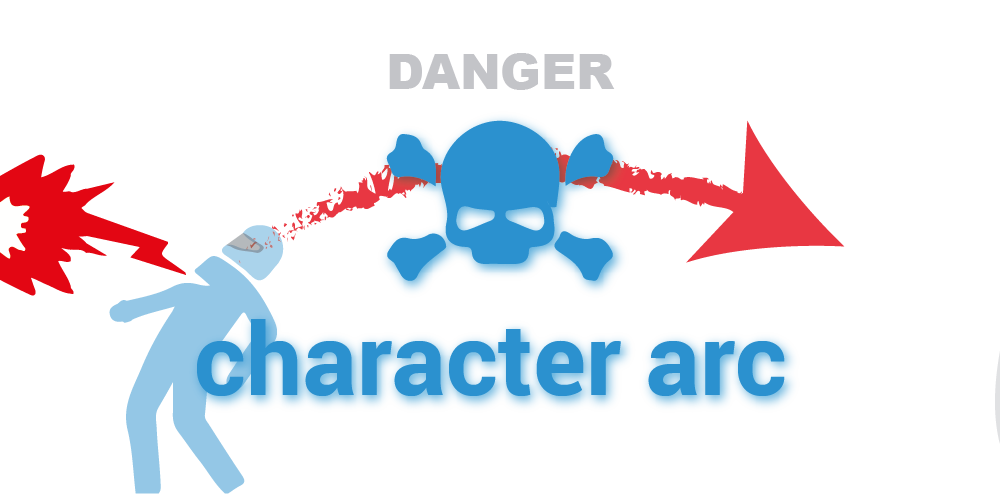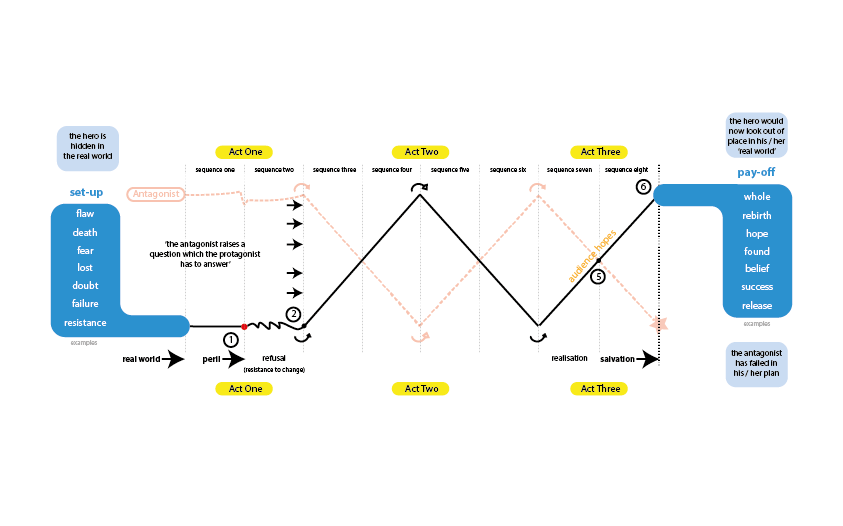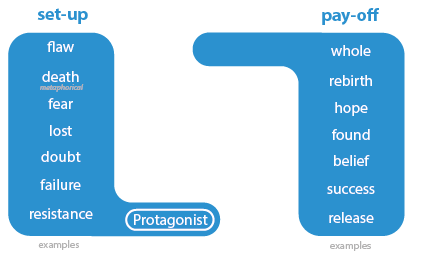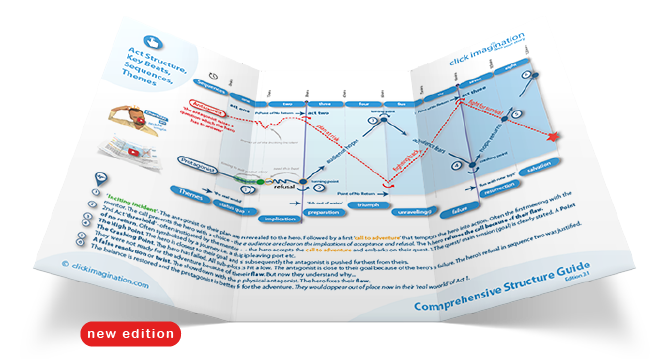Those Character Arc Things
Let’s face it there are plenty of confusing things about screenwriting and right up there with the inciting incident and the call to adventure there’s the dash befuddling ‘character arc’ thing - and yes, I’m doing air quotes.
Well, if you’re scratching your head so much it’s bleeding then you’ve come to the right place.

Firstly - the basics. A character arc simply means that by the end of the film your hero has been on a subjective (personal) journey that’s resulted in them fixing a weakness or flaw. It’s not the objective story which is the underpinning reason that necessitated the journey. I.e. stopping terrorists in Die Hard. The Subjective journey is personal.
...what the hell. No! I ordered a twelve-inch pianist
For the purposes of clarifying this point we are going to remove the movie’s second act and focus entirely in Act 1 and Act 2. Set-up, Pay-off. I will say that again. Set-up, Pay-off.
We want to develop the pay-off and set-up as a conjoined, modular unit of two integral parts. If not crafted together, the parts may fail to fit.
Like a joke, a character arc only really works when the punchline is set-up properly. The mechanics in script terms is a polar opposite or reversal between the first and second acts. If a character ends the movie with confidence - then they need to start the movie being a nervous wreck.
Set-up and pay-off: Hero with a flaw to start and hero whole at the end. Hero broken and hero fixed. Fear and hope. Death and rebirth. Doubt and belief. Lost and Found. All of these are opposites that express a character arc.
So on the left (above) we see the hero hiding in the real world. (you can get the chart free from the download page). They are too small for the world they inhabit. They then face a call, peril which they refuse in Act 1. Then realisation of their flaw in act 3 that leads to salvation. They are now too big for the world they inhabit. They have grown.
It’s a famous bug of some screenwriting tutor who I don’t recall - but writers are prone to forgetting that they are writing for an audience. Stick a big note above your writing desk ‘OK - what is the audience feeling at this point!’ Although this is equally important to consider throughout the script, it’s the climax where you can’t take your eye off the ball. You can’t ever get away with a weak third act.
The sole purpose of the second act is to dramatise this emotional journey. To make the punchline even funnier. To add depth, funny voices, misdirection and gun fights. But a journey must always end and if the punchline isn’t funny - if the movie doesn’t rise to an emotional and spectacular crescendo - then the audience has wasted their time.
Look at examples in the movies you love. Why do you love them. Why do they work - inside you. I have seen Die Hard a hundred times but I still get chills in the closing scenes when John and Holly finally come face to face. There’s a moment when she sees her husband barefoot, beaten and bleeding that we know how much ‘doing the right thing’ means to him. In the opening scenes he notes to Argyle that he couldn’t go with his wife to Los Angeles because of a backlog of New York scumbags he needed to put behind bars - now at the end of the movie, we see the conviction that underpins that. This guy will sacrifice everything to get the job done. His arc was to fix his relationship with his wife. At the end of the movie, we feel that she understands him and him her.
In Star Wars a New Hope and The Matrix, Neo and Luke both start out by ‘doubting’ their abilities. In the end they ‘believe’.
Work out what the payoff is - then work back to set it up.
For extra punch have the antagonist’s arc mirror that of the protagonist. For example in The Matrix again, when Neo starts to believe in himself - Agent Smith starts to doubt himself.
That story arc is the real story. It’s not about stopping terrorists or catching the bad guy. Would The Matrix have been soon forgotten if Neo didn’t have a character arc… most likely. Not because of the spectacular action or special effects - there are plenty of films with those things - but because the emotional thread that sets up the line ‘he’s starting to believe’ elevates the ending to spine-tingling heights. What a climax. Was it an accident? Was it a coincidence that the audience felt that at the end? No. That’s brilliant writing. When you know how good movies are with a character arc, it’s inexcusable to leave them out.
Download the Character Arc Worksheet that accompanies this blog and use it to test your own stories.



